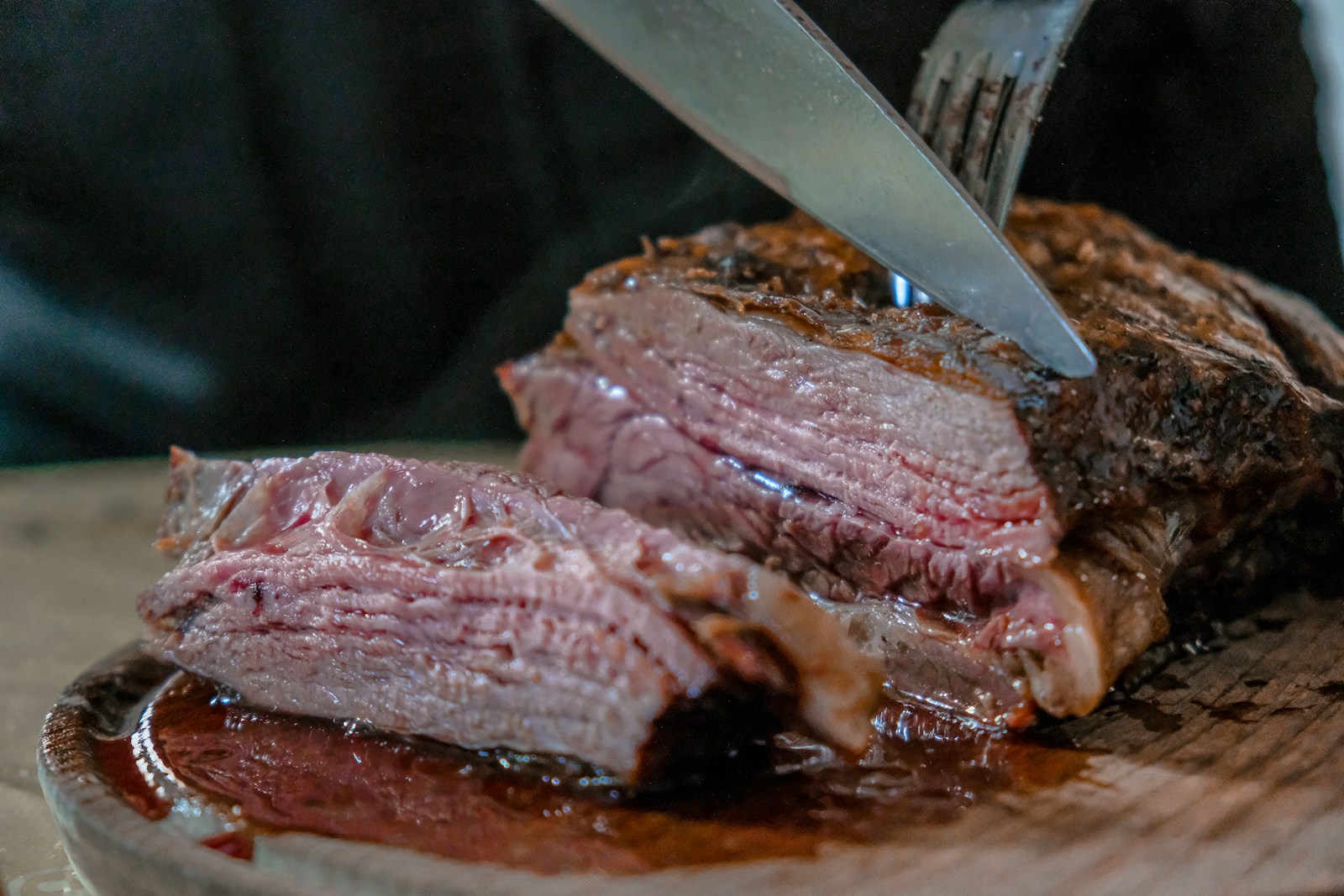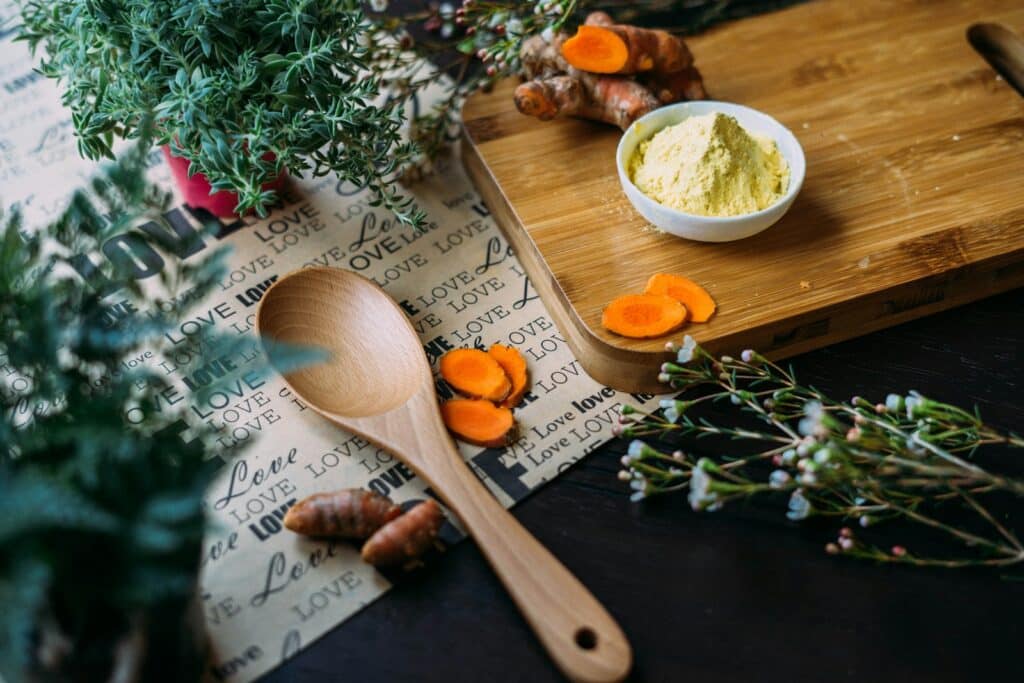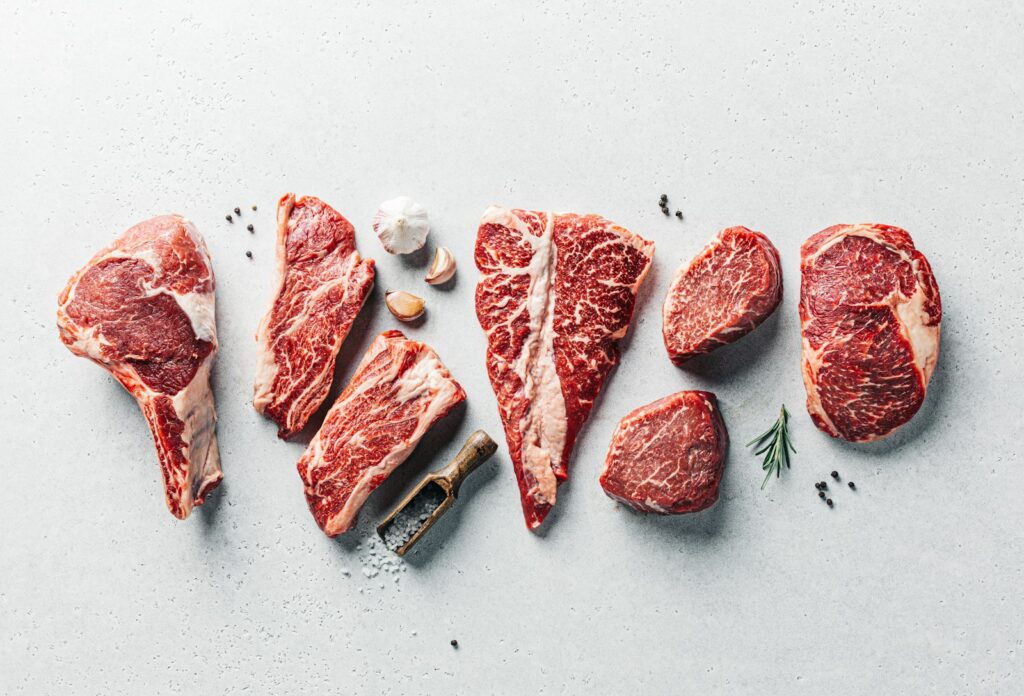Introduction: Does Chuck Roast Get More Tender the Longer You Cook It?
Does Chuck Roast Get More Tender the Longer You Cook It? Discover the Impact of Extended Cooking Times on the Tenderness of Chuck Roast
Chuck roast is a beloved cut of beef known for its rich flavor and affordability. However, achieving that perfect melt-in-your-mouth tenderness can be a challenge. In this comprehensive guide, we’ll delve into the age-old question: Does chuck roast get more tender the longer you cook it? For an even deeper exploration of chuck roast recipes and cooking techniques, check out our detailed guide, Chuck Roast Recipes: The Ultimate Guide, where we unlock the secrets to achieving perfectly tender chuck roast through science-backed methods and expert tips.
The Science Behind Tenderization
Understanding the science behind tenderization can significantly improve your cooking, especially when it comes to tougher cuts like chuck roast. A common question many have is, ‘Does Chuck Roast Get More Tender the Longer You Cook It?’ Tenderization is a process that breaks down the meat’s connective tissues and muscle fibers, making it easier to chew and more enjoyable to eat. Several factors contribute to the tenderization process, including the type of meat, cooking method, and the use of certain cooking aids like marinades or mechanical tenderizers. If you’re interested in exploring this topic in greater detail, be sure to read our comprehensive guide, ‘Chuck Roast Recipes: The Ultimate Guide,’ which dives deeper into how cooking duration affects chuck roast tenderness.
Connective Tissue and Muscle Fibers:
Chuck roast contains a high amount of connective tissue, primarily collagen, which is tough and can make the meat chewy if not cooked properly. During slow cooking, the collagen melts into gelatin at temperatures between 160°F to 200°F (71°C to 93°C), which not only tenderizes the meat but also adds a rich, silky texture to the dish.
Cooking Methods:
Slow cooking methods such as braising, stewing, or using a slow cooker are ideal for tenderizing chuck roast. These methods use low, moist heat over several hours, allowing the collagen to convert into gelatin effectively. This transformation is what gives well-cooked chuck roast its famously tender texture.
Enzymatic Tenderization:
Certain fruits contain enzymes that can break down proteins and collagen in meat, aiding in tenderization. For example, papain from papaya, bromelain from pineapple, and actinidin from kiwi are commonly used in marinades to soften meat fibers before cooking. However, these should be used carefully as they can over-tenderize the meat, making it mushy if left for too long.
Mechanical Tenderization:
This involves physically breaking down the muscle fibers and connective tissue. Methods include pounding the meat with a meat mallet, scoring with a knife, or using devices designed to pierce the meat with blades or needles. Mechanical tenderization is a quick method to prepare meat for faster cooking methods like grilling or sautéing.
Acidic Marinades:
Acidic ingredients like vinegar, lemon juice, or yogurt can also help in tenderizing meat. The acid helps to weaken the collagen and proteins in muscle fibers, making them more susceptible to breaking down during cooking. However, similar to enzymatic tenderizers, acids should be used judiciously to avoid overly softening the meat.
By understanding these scientific principles, home cooks can achieve perfectly tender chuck roast dishes that are both flavorful and satisfying. Whether you’re slow-cooking for hours or preparing a quick marinade, the key to tenderization lies in how you manipulate the proteins and connective tissues within the meat. To enhance your meal further, consider exploring some side dish options. Learn how to elevate your baked beans with our article, ‘What Makes Baked Beans Better? Elevate Your Baked Beans‘, which provides excellent tips and variations to perfectly complement your chuck roast.”
Achieving Tender Chuck Roast: Cooking Techniques
Cooking a tender chuck roast is an art that balances time, temperature, and techniques. A question often asked is, ‘Does Chuck Roast Get More Tender the Longer You Cook It?’ Given its rich connective tissues and dense muscle fibers, chuck roast requires specific cooking methods to transform it into a succulent and flavorful dish. Here’s how you can achieve the perfect tender chuck roast using various techniques:
1. Low and Slow Cooking:
The most effective way to tenderize chuck roast is by cooking it low and slow. This method allows the heat to gradually penetrate the meat, breaking down tough connective tissues without overcooking the exterior. Techniques include:
- Braising: This involves searing the meat first to develop flavor and then cooking it slowly in a small amount of liquid in a covered pot. This not only keeps the meat moist but also uses the steam and heat to gently break down the collagen.
- Slow Cooking: Using a slow cooker or a Crock-Pot is ideal for chuck roast. The consistent low temperature helps the collagen turn into gelatin over many hours, resulting in meat that can be easily pulled apart with a fork.
2. Sous Vide:
Sous vide is a technique where the meat is vacuum-sealed in a bag and cooked to a precise temperature in a water bath. For chuck roast, cooking it at around 135°F (57°C) for 24-48 hours can yield exceptionally tender results. The controlled temperature ensures that the meat does not overcook, while the extended time allows for thorough tenderization. Check out our detailed article on Chuck Roast Recipes: The Ultimate Guide, which explores various techniques to enhance the flavor and tenderness of this popular cut.
3. Marinating:
Incorporating a marinade with acids like vinegar or lemon juice can start the tenderization process before cooking even begins. The acid in the marinade helps to break down some of the muscle fibers and connective tissues. For an effective marinade:
- Combine acidic components with aromatics and oils.
- Allow the chuck roast to marinate for several hours, or overnight, to maximize the tenderizing effect.
4. Pressure Cooking:
If time is of the essence, using a pressure cooker can significantly speed up the cooking process while still achieving a tender result. The high pressure forces moisture into the meat, helping to break down tough tissues more quickly than conventional cooking.
5. Resting the Meat:
After cooking, it’s crucial to let the chuck roast rest before slicing. This allows the juices to redistribute throughout the meat, ensuring that it remains moist and tender. Cover the roast loosely with foil and let it sit for at least 15-20 minutes.
By employing these techniques, you can master the preparation of a chuck roast that is both tender and full of flavor. Each method offers its own advantages, whether it’s the set-and-forget ease of slow cooking, the precise control of sous vide, or the quick convenience of a pressure cooker. Experimenting with these methods will help you discover the best way to cook your chuck roast to perfection.
Looking to pair your tender chuck roast with a classic side? Discover some unique twists in our articles about enhancing baked beans, such as What Makes Baked Beans Better? Elevate Your Baked Beans and Why Put Mustard in Baked Beans? Transform Your Baked Beans. These articles offer excellent tips and variations to perfectly complement your chuck roast.
Insider Tips for Perfectly Tender Chuck Roast: Does Chuck Roast Get More Tender the Longer You Cook It?
Achieving a perfectly tender chuck roast isn’t just about following a recipe; it’s about mastering the nuances that make this dish a comfort food favorite. Here are some insider tips that can help you elevate your chuck roast from good to exceptional:
1. Choose the Right Cut:
- Opt for a chuck roast that has a good amount of marbling. The fat running through the meat will melt during cooking, keeping the roast moist and adding flavor.
- Consider the size of the roast. A thicker cut allows for longer cooking times without drying out, enhancing tenderness.
2. Searing Is Essential:
- Always sear your chuck roast before slow cooking. Searing the meat on all sides in a hot pan creates a crust that locks in flavors and juices. This step adds a depth of flavor that slow cooking alone cannot achieve.
3. Season Generously:
- Don’t be shy with seasonings. Salt and pepper are a must, but adding herbs like rosemary, thyme, or bay leaves can infuse the meat with aromatic flavors that penetrate deeply during the cooking process.
- Rubbing the roast with spices and letting it sit overnight can enhance the flavor profile significantly.
4. Low and Slow is the Key: Does Chuck Roast Get More Tender the Longer You Cook It?
- Patience pays off when cooking chuck roast. Use a low temperature for several hours. Whether you’re using an oven, slow cooker, or sous vide, gentle heat helps break down the tough fibers without overcooking the meat.
- Keep the environment moist. Use broth, wine, or water to create steam and maintain moisture throughout the cooking process.
5. Utilize Natural Tenderizers:
- Ingredients like onions, garlic, and tomatoes not only add flavor but also help tenderize the meat during cooking. Their natural enzymes and acids break down tough proteins.
- Cooking the roast with a small amount of acidic ingredient (like vinegar or tomato paste) can also aid in tenderization.
6. The Magic of Braising Liquid:
- The braising liquid should only come up to about a third of the way up the roast. This ensures that the resulting steam bathes the meat without boiling it.
- Consider making your braising liquid flavorful. Mix in a stock cube, a splash of soy sauce, or Worcestershire sauce for an umami boost.
7. Check Doneness Correctly:
- Resist the temptation to check doneness by timing alone. Use a fork to test if the meat pulls apart easily. If it does, it’s ready.
- Invest in a good meat thermometer to ensure the internal temperature is correct, especially if you’re new to cooking chuck roast.
8. Let it Rest: Does Chuck Roast Get More Tender the Longer You Cook It?
- Allow the roast to rest covered in foil for at least 20 minutes after cooking. This step redistributes the juices back into the meat, ensuring that it’s moist and tender when sliced.
9. Slice Against the Grain:
- To make the meat even more tender, slice the chuck roast against the grain. This cuts through the muscle fibers and makes the meat easier to chew.
By incorporating these insider tips into your cooking routine, you can consistently produce a chuck roast that is not only tender and flavorful but also worthy of being the centerpiece at your dining table.
Tips for Perfect Chuck Roast Texture
Ah, the quest for the perfect chuck roast texture – a journey filled with savory delights and tantalizing aromas. But fear not, fellow culinary adventurer, for I come bearing secrets to unlock the tender treasure within your chuck roast.
Selecting the Perfect Chuck Roast
First things first, dear reader: choose your chuck roast wisely. Look for a cut with ample marbling – those fine streaks of fat weaving through the meat are the key to tenderness and flavor. Opt for a roast with a good balance of lean meat and fat, ensuring a juicy and succulent result.
Preparing Your Chuck Roast
Once you’ve selected the prime specimen, it’s time to prepare your chuck roast for its flavorful journey. Begin by patting the meat dry with paper towels – moisture is the enemy of a good sear. Season generously with salt, pepper, and your favorite herbs and spices, allowing the flavors to penetrate deep into the meat.
Monitoring Cooking Progress
As your chuck roast embarks on its slow and steady transformation, keep a watchful eye on its progress. Whether you’re braising on the stovetop or slow cooking in the oven, maintain a gentle simmer or low heat to ensure tender perfection. Use a meat thermometer to gauge doneness – aim for an internal temperature of around 200°F for melt-in-your-mouth tenderness.
With these tips in your culinary arsenal, you’re well-equipped to achieve the perfect chuck roast texture every time. So, don your apron, sharpen your knives, and embark on a flavorful adventure that will delight your taste buds and warm your soul. Happy cooking, dear reader!
Conclusion: Does Chuck Roast Get More Tender the Longer You Cook It?
In conclusion, the age-old question “Does chuck roast get more tender the longer you cook it?” finds its resounding answer in the realm of culinary science and technique. Through the gentle alchemy of slow cooking and the transformative power of collagen breakdown, chuck roast indeed becomes increasingly tender with extended cooking times. By embracing patience, seasoning with care, and selecting the right cooking method, you can unlock the secrets to tender perfection in every bite. So, the next time you embark on a culinary adventure with chuck roast, rest assured that with the right approach, you’ll savor the rewards of tender, succulent meat that delights the senses and satisfies the soul.
FAQ:
How long does it take chuck roast to get tender?
The time it takes for a chuck roast to become tender depends on various factors such as the cooking method, temperature, and size of the roast. Generally, for maximum tenderness, it’s recommended to cook a chuck roast low and slow for 8-10 hours in a slow cooker or at least 3-4 hours in a conventional oven. However, smaller cuts may require less time, while larger roasts may need additional cooking time to reach the desired tenderness.
Does chuck roast get tougher the longer you cook it?
Contrary to popular belief, chuck roast does not necessarily get tougher the longer you cook it, especially when employing low and slow cooking methods. Instead, prolonged cooking allows the collagen in the meat to gradually break down into gelatin, resulting in a tender and succulent texture. However, if cooked at high heat or for excessive periods without sufficient moisture, chuck roast may indeed become tough and dry.
Does beef chuck get softer the longer you cook it?
Yes, beef chuck does tend to become softer the longer you cook it, particularly when using gentle cooking methods such as braising or slow cooking. As collagen breaks down into gelatin over time, the meat undergoes a remarkable transformation, becoming increasingly tender and flavorful. However, it’s essential to monitor the cooking process carefully to prevent overcooking, which can result in mushy or dry meat.
Why is my roast still tough after 8 hours?
If your roast remains tough after 8 hours of cooking, several factors may be at play. Firstly, ensure that you’re cooking the roast at a low and consistent temperature to allow for proper collagen breakdown. Additionally, check that there is enough moisture in the cooking environment to prevent the meat from drying out. Finally, consider the quality and cut of the chuck roast – tougher cuts with less marbling may require longer cooking times to achieve tenderness. Adjusting these factors accordingly can help troubleshoot and ensure a tender and delicious result.






